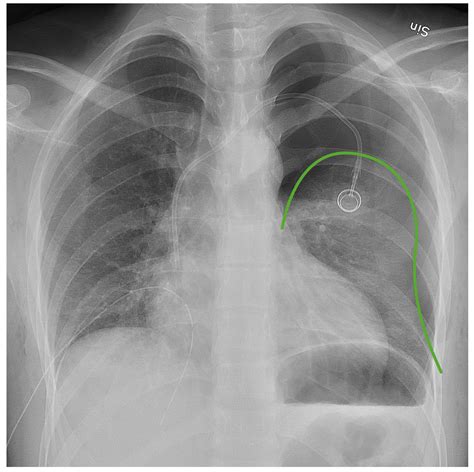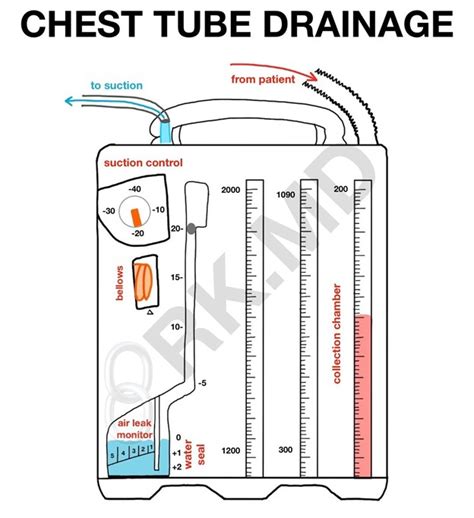Intro
Learn about Pneumothorax Chest Tube Placement, a lifesaving procedure for collapsed lungs, involving thoracic catheter insertion and lung re-expansion, to treat pneumothorax and related respiratory issues.
The insertion of a chest tube, also known as thoracostomy, is a common medical procedure used to treat various conditions, including pneumothorax, which is a life-threatening condition that occurs when air enters the space between the lungs and chest cavity. This condition can cause the lung to collapse, leading to respiratory distress and even death if left untreated. The importance of prompt and proper treatment of pneumothorax cannot be overstated, as it can significantly improve patient outcomes and reduce the risk of complications. In this article, we will delve into the world of pneumothorax chest tube placement, exploring the benefits, working mechanisms, steps, and other key information related to this critical medical procedure.
The significance of pneumothorax chest tube placement lies in its ability to restore normal lung function and prevent further complications. When a pneumothorax occurs, the air that enters the pleural space can cause the lung to collapse, leading to a decrease in oxygenation and an increase in respiratory distress. By inserting a chest tube, medical professionals can remove the air from the pleural space, allowing the lung to re-expand and resume its normal function. This procedure is not only life-saving but also essential for preventing long-term damage to the lungs and other organs.
The process of pneumothorax chest tube placement involves several key steps, including preparation, insertion, and post-procedure care. Medical professionals must carefully prepare the patient for the procedure, which includes administering local anesthesia and ensuring that the patient is in a stable condition. The insertion of the chest tube requires great skill and precision, as the tube must be placed in the correct position to ensure effective drainage of the pleural space. After the procedure, patients require close monitoring and care to prevent complications and promote healing.
Pneumothorax Overview

Types of Pneumothorax
There are several types of pneumothorax, including spontaneous, traumatic, and iatrogenic. Spontaneous pneumothorax occurs without any apparent cause, while traumatic pneumothorax is caused by injury or trauma. Iatrogenic pneumothorax is a complication of medical procedures, such as lung biopsy or mechanical ventilation. Each type of pneumothorax requires a different approach to treatment, and medical professionals must carefully diagnose the condition to determine the best course of action.Chest Tube Placement Procedure

Preparation
Preparation for chest tube placement involves several key steps, including: * Administering local anesthesia to minimize pain and discomfort * Ensuring that the patient is in a stable condition, with vital signs within normal limits * Positioning the patient in a way that allows easy access to the chest cavity * Sterilizing the skin and draping the area to prevent infectionInsertion
The insertion of the chest tube requires great skill and precision, as the tube must be placed in the correct position to ensure effective drainage of the pleural space. Medical professionals use a combination of anatomical landmarks and imaging studies to guide the insertion of the tube. The tube is typically inserted through a small incision in the chest wall, and a guidewire is used to help advance the tube into the pleural space.Benefits of Chest Tube Placement

Risks and Complications
While chest tube placement is a relatively safe procedure, there are some risks and complications that patients should be aware of. These include: * Infection: As with any invasive medical procedure, there is a risk of infection with chest tube placement. * Bleeding: There is a risk of bleeding or hemorrhage during or after the procedure. * Lung injury: The tube can cause injury to the lung or other organs in the chest cavity.Post-Procedure Care

Follow-Up Care
After discharge from the hospital, patients will require follow-up care to ensure that the chest tube is functioning properly and that there are no complications. This includes: * Regular check-ups: Patients will need to see their doctor regularly to check on the chest tube and ensure that it is functioning properly. * Monitoring for complications: Patients should be aware of the signs and symptoms of complications, such as infection or bleeding, and seek medical attention immediately if they experience any of these.Conclusion and Future Directions

Final Thoughts
Pneumothorax chest tube placement is a complex and highly specialized medical procedure that requires great skill and precision. Medical professionals must carefully prepare patients for the procedure, insert the tube with precision, and provide close monitoring and care after the procedure. By understanding the benefits, risks, and complications of chest tube placement, patients can make informed decisions about their care and work with their medical team to achieve the best possible outcomes.What is pneumothorax?
+Pneumothorax is a serious medical condition that occurs when air enters the space between the lungs and chest cavity, causing the lung to collapse.
What are the symptoms of pneumothorax?
+The symptoms of pneumothorax can vary depending on the severity of the condition, but common signs include chest pain, shortness of breath, and coughing.
What is chest tube placement?
+Chest tube placement is a medical procedure that involves inserting a tube into the chest cavity to remove air or fluid and restore normal lung function.
What are the benefits of chest tube placement?
+The benefits of chest tube placement include restoration of normal lung function, prevention of long-term damage, and relief of respiratory distress.
What are the risks and complications of chest tube placement?
+The risks and complications of chest tube placement include infection, bleeding, and lung injury.
We hope this article has provided you with a comprehensive understanding of pneumothorax chest tube placement. If you have any further questions or would like to learn more about this topic, please don't hesitate to comment or share this article with others. Your feedback and engagement are invaluable to us, and we look forward to hearing from you.
